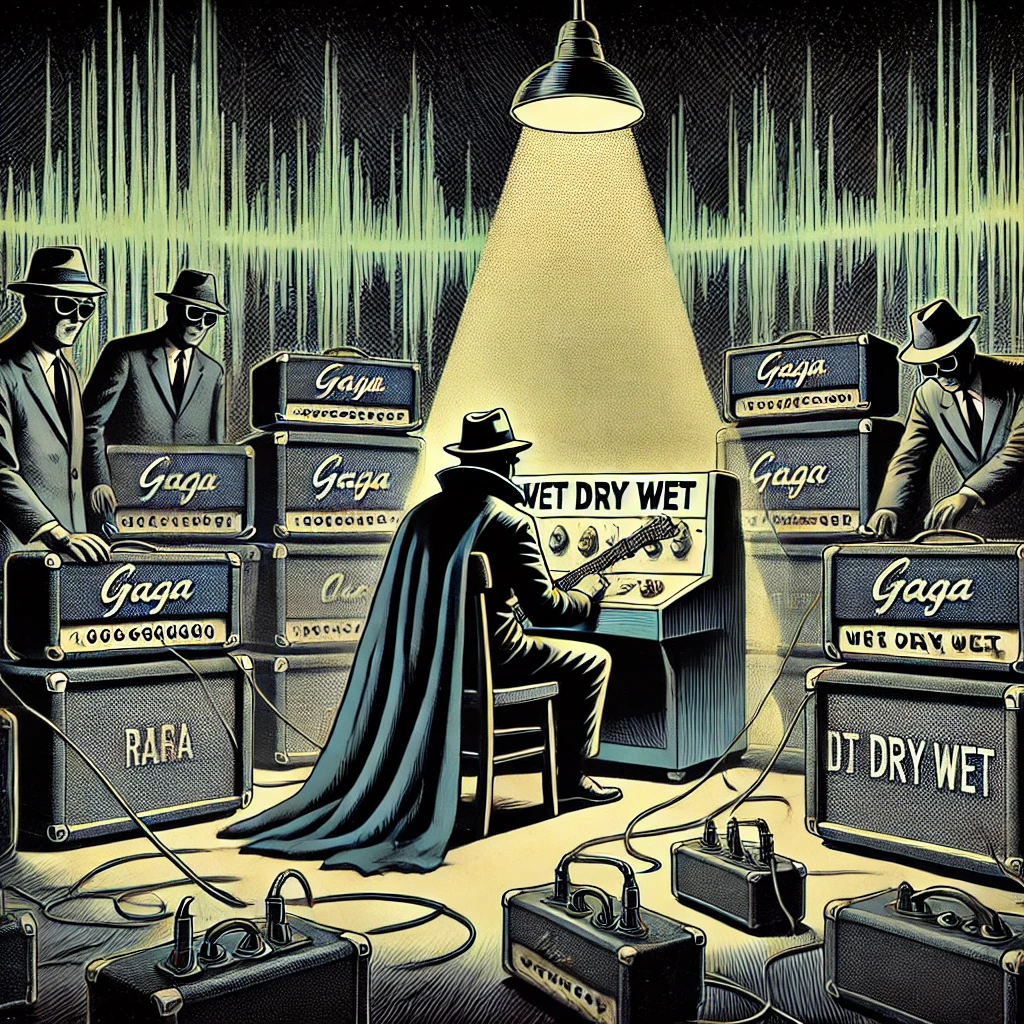GAGA and the Wet Dry Wet Rig
Abstract
Recently I wanted to join the ranks of those who play their effects signal separately from their main signal, the benefits include a better control of the volume of the two signals as well as a huge sound stage…
Content
GAGA is an excellent front end for a Wet Dry Wet rig. Here is how I arrived at a new level of Tone-to-Die-For…
Recently I wanted to join the ranks of those who play their effects signal separately from their main signal, the benefits include a better control of the volume of the two signals as well as a huge sound stage. This usually means the time based effects, such as reverb and flanging, Leslie-type Roto sounds, or even chorus.
A recent GAGA performer was ready to part out his amplifier collection and so he assigned me the task of selling a few of his amps. I took this opportunity to get to know what I was about to sell first handed. I lined up my rig with one amp on the left, call it The Left Channel, my rig in the center, a GAGA I-90 head playing through a Bogner Metropolis sized open backed 1 x 12″ cabinet sporting a Jensen Jet speaker, to the right, another amp we will call The Right Channel.
GAGA has two outs in the back. One is the Send from the effects loop, which has a trim pot next to it. The other is the Line Out, which is a fixed level out. The benefit to having a trim pot so that you don’t send too hot a signal is very important. From my send I feed a George Dennis stereo volume pedal. It is one channel in and two channels out. It is opto-isolated, so there is no possibility of unwanted noise.
My outputs feed two channels of inputs on my Strymon blueSky reverb. The output of which feeds the two effects channels: The Left Channel and The Right Channel. If I’m running more stereo effects I will daisy chain them because 1) only one would be used at a time, and 2) there would never be a chain of more than 3 effects.
The sound quality of Strymon’s blueSky is without peer. Turning the effect’s mix control all the way so that ONLY THE EFFECT signal is output is wise because we are keeping the dry signal through the main amp only.
The result….VAST, like a wall of sound, lush and deep. Spreading out the two effects amps, aiming them accordingly only further contributes to a Tone-to-Die-For.
